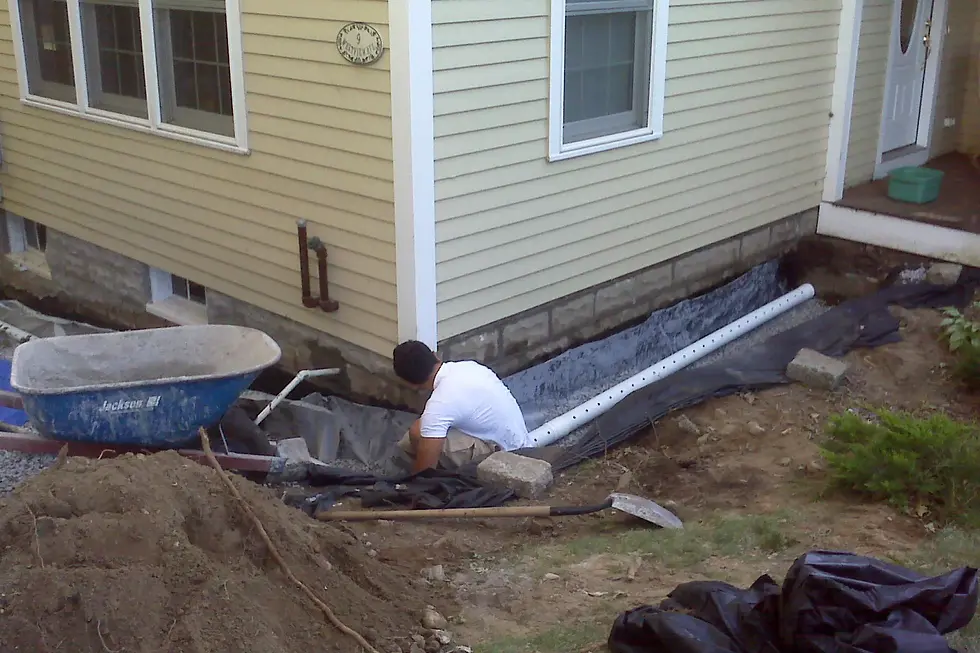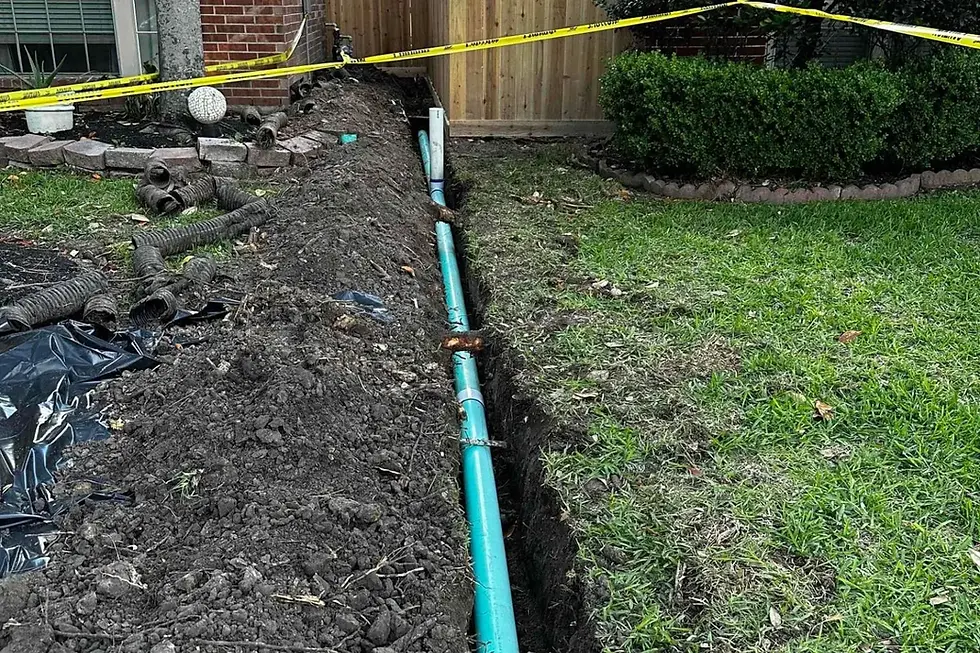How Deep Should a French Drain Be? Expert Guide from Solid Ground Outdoor
- Solid Ground Outdoor
- Aug 26
- 4 min read
TLDR;
A French drain is typically dug 18 to 24 inches deep for most residential yard drainage, 12 to 18 inches for surface water control, and up to 36 inches or more for foundation protection or high water table areas. The exact depth depends on soil type, water flow, slope, and your specific drainage goals.
Why Depth Matters in a French Drain

Depth affects how efficiently a French drain collects and channels water away from problem areas. Too shallow and it will not intercept enough water. Too deep and you risk unnecessary excavation, higher costs, or hitting utilities.
Key roles of proper depth:
Allows water to flow into the perforated pipe without clogging quickly
Keeps the drain effective during heavy rain
Protects building foundations from hydrostatic pressure
Matches the slope required for gravity flow
Solid Ground Outdoor has seen many drainage issues caused by incorrect depth. Getting it right from the start saves time and money.
Recommended French Drain Depth by Application

Surface Drainage (12–18 inches)
Ideal for removing standing water from lawns or garden areas
Depth is enough to intercept water before it saturates soil layers
Works best in sandy or loamy soils with quick infiltration
General Yard Drainage (18–24 inches)
Common choice for redirecting runoff away from patios, driveways, or low spots
Depth allows better gravel bedding and pipe stability
Suitable for moderate rainfall areas
Foundation and Basement Protection (24–36 inches or more)
Prevents water buildup along foundation walls
Helps lower the water table around the home
Often paired with waterproofing membranes and sump pump systems
Extreme Conditions or Crawl Spaces (36 inches and deeper)
Used when groundwater is high or property sits in a flood-prone zone
Requires careful planning to maintain trench stability
May involve specialized equipment and safety measures
Key Factors That Influence French Drain Depth

Soil Type
Clay-heavy soils hold water longer, often requiring deeper drains to access free-flowing water
Sandy soils drain faster, so shallow depths may work well
In North Carolina, Piedmont regions often need deeper systems than coastal sandy areas. Homeowners sometimes compare gravel vs mulch for drainage, but for French drains, gravel is the superior choice because it allows water to flow freely without trapping moisture.
Water Table and Frost Line
Areas with high water tables require drains deep enough to intercept subsurface water
In much of North Carolina, frost depth is 6 to 12 inches, so most drains remain below frost line
Terrain Slope and Discharge Point
A consistent slope is vital, usually 1 inch drop per 8 to 10 feet of length
Discharge location should be lower than the starting point to maintain flow
Drainage Purpose
Surface water removal needs less depth than foundation drainage
Always match the system’s purpose with trench depth and width
Local Regulations and Permits
Some municipalities in North Carolina require permits for drainage work
Codes may dictate minimum burial depth to avoid freeze damage or protect public utilities
Step-by-Step Installation Depth Planning

Planning and Permits
Map out problem areas and intended discharge location
Contact local utility marking service before digging
Check for any required permits
Measuring Depth and Slope
Use a string line and level to ensure proper slope
Mark trench depth at intervals to guide consistent digging
Digging the Trench
Keep trench width about 9 to 12 inches for residential drains
For deeper drains, stabilize trench walls to prevent collapse
Installing the Base Layer
Add 2 to 3 inches of washed gravel before laying pipe
Position perforated pipe holes facing downward for best infiltration
Adding Gravel, Fabric, and Backfill
Surround pipe with gravel to about 2 inches from ground surface
Wrap with landscape fabric to prevent soil intrusion
Cover with topsoil or turf to restore appearance
Common Depth Mistakes to Avoid

Too shallow for the intended purpose, causing poor performance
Too deep without proper slope, leading to stagnant water
No gravel base under pipe, reducing water flow
Ignoring soil type when choosing depth
Failing to meet local frost depth requirements
Maintenance and Longevity Considerations

Flush the system yearly to prevent sediment buildup
Check outlet for blockages after storms
Replace gravel or fabric if signs of clogging appear
Expected lifespan ranges from 15 to 25 years with proper care
Advanced and Complementary Systems

Combine French drains with rain gardens for eco-friendly water absorption
Use with dry wells for areas where discharge location is limited
Pair with sump pumps in basement-heavy properties
North Carolina-Specific Drainage Notes

Piedmont clay often requires deeper installations
Coastal sandy soils work well with shallow systems
Heavy seasonal rain means drains should be sized for peak flow
Some counties require erosion control plans for large installations
Frequently Asked Questions
Q: How deep should a French drain be to prevent basement flooding?
A: At least 24 to 36 inches, sometimes more if groundwater pressure is high.
Q: What is the minimum trench depth for an effective French drain?
A: Usually 12 inches for surface water control, but effectiveness improves with 18 inches or more.
Q: Does deeper always mean better?
A: No, depth should match purpose, soil, and slope requirements.
Q: Is there a maximum depth?
A: Not technically, but deeper drains require more safety precautions and cost.
Depth and Material Summary Table
Application | Typical Depth | Trench Width | Notes |
Surface Drainage | 12–18 in | 9–12 in | Lawn and garden water control |
General Yard Drainage | 18–24 in | 9–12 in | Redirects runoff |
Foundation Protection | 24–36 in | 12+ in | Prevents basement seepage |
Extreme Conditions | 36+ in | Variable | High water table, flood zones |
Practical Takeaways from Solid Ground Outdoor
Always start depth planning with your purpose in mind
Match soil type and slope to depth for best results
Do not skip gravel base or fabric lining
Maintain your drain to keep it effective for decades





Comments